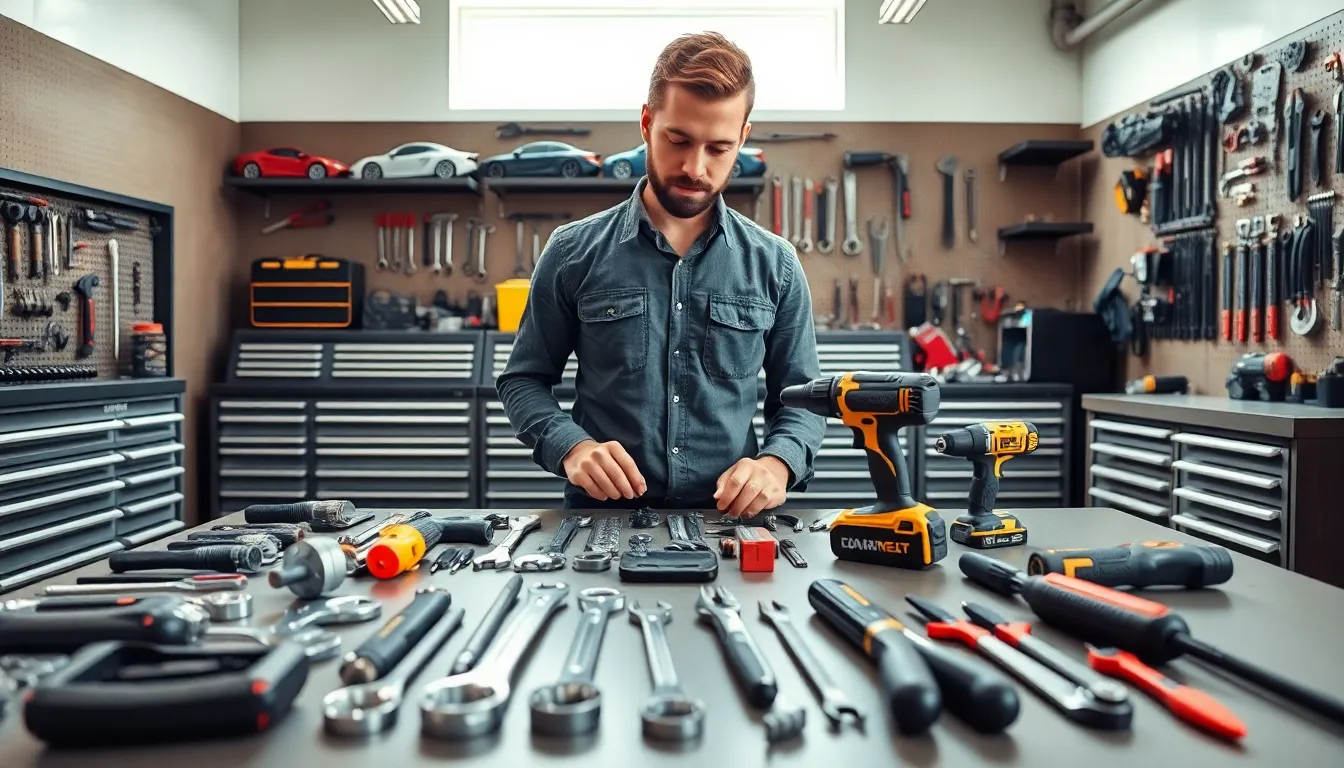Have you ever felt lost in a garage full of wrenches and screwdrivers and wondered, “Where on earth do I start?” Fear not, fellow grease monkey. In the automotive world, having the right tools can make all the difference between a smooth repair and a total disaster. This comprehensive list of automotive workshop tools will not only keep you organized but also help you tackle any job like a pro. Whether you’re a DIY enthusiast or a seasoned mechanic, this guide will equip you with everything you need. Let’s immerse.
Table of Contents
ToggleEssential Hand Tools for Automotive Workshops

When it comes to automotive repairs, a solid foundation starts with hand tools. These trusty instruments are indispensable in any workshop. Here’s a detailed breakdown of the must-have hand tools:
Wrenches
A diverse set of wrenches, including combination, open-end, and adjustable types, is vital. They help in loosening or tightening nuts and bolts effectively. Look for high-quality materials that resist rust and wear.
Screwdrivers
Every mechanic needs a reliable set of screwdrivers, both flathead and Phillips. Consider investing in magnetic screwdrivers to make life easier when dealing with tiny screws in tight spots.
Pliers
Pliers come in various types, including needle-nose, standard, and locking pliers. Each serves unique purposes, from gripping to bending wires. Don’t forget a good set of wire cutters too.
Hammers
No workshop is complete without a couple of hammers. A ball peen hammer and a rubber mallet can handle a range of tasks, from shaping metal to tapping parts into place.
Ratchets and Sockets
Ratchets and sockets streamline the process of tightening fasteners. Look for a ratchet set that includes both metric and SAE sizes to cover all bases.
Torque Wrench
Accurate torque is crucial to any mechanical assembly. A reliable torque wrench ensures that bolts are tightened to manufacturer specifications, avoiding any over-tightening or under-tightening disasters.
These hand tools play a significant role in achieving precision and efficiency in any automotive task.
Power Tools for Automotive Repair
Power tools have revolutionized the way mechanics work, making repairs faster and less labor-intensive. Here’s a rundown of essential power tools:
Electric Impact Wrench
An electric impact wrench is perfect for quickly removing lug nuts and fasteners. This tool saves time and energy, especially during tire changes and extensive repairs.
Air Compressor
An air compressor is essential for powering pneumatic tools. This piece of equipment can also be used for inflating tires and cleaning parts, making it a versatile addition to any workshop.
Angle Grinder
An angle grinder is invaluable for cutting, grinding, and polishing metal parts. With the right attachments, it can handle a variety of tasks, from sharpening blades to removing rust.
Drill and Drill Bits
A good power drill is a mechanic’s best friend. Look for a cordless drill for the convenience of maneuverability. Make sure to have a range of drill bits as well, different sizes and types for various materials.
Buffer and Polisher
If restoring the sheen to a vehicle’s paint is on the agenda, a buffer and polisher is a must-have. Regular waxing and buffing keep cars looking their best and protect the paint from damage.
Diagnostic Tools and Equipment
In today’s automotive landscape, diagnostic tools are crucial for understanding vehicle issues quickly and accurately. Here’s a list of essential diagnostic equipment:
OBD-II Scanner
An OBD-II scanner is a lifesaver for identifying engine troubles. This tool connects to the vehicle’s computer system and retrieves error codes. It’s relatively easy to use and can save hours of guessing.
Multimeter
For testing electrical systems, a multimeter is a must. It measures voltage, current, and resistance, allowing for a thorough diagnosis of electrical problems.
Smoke Machine
A smoke machine is essential for identifying leaks in the intake or exhaust system. By introducing smoke into the system, mechanics can track down elusive leaks that would otherwise go unnoticed.
Safety Equipment in Automotive Workshops
Safety should always be prioritized in a workshop. Having the right safety equipment can prevent accidents and injuries. Here are the essentials:
Safety Goggles
Protective eyewear is a non-negotiable. Safety goggles safeguard against flying debris and chemical splashes, ensuring that vision remains clear while working.
Gloves
Invest in high-quality work gloves that provide grip while protecting hands from cuts and abrasions. Nitrile gloves are a great choice for working with chemicals.
Ear Protection
Power tools can be loud. Having ear plugs or noise-canceling headphones helps protect hearing long-term.
Fire Extinguisher
Every workshop needs at least one fire extinguisher. Class B extinguishers are suitable for flammable liquids and should be easily accessible in case of emergencies.
Storage Solutions for Tools
An organized workshop is more efficient and safer. Here’s how to manage tool storage:
Tool Chests
Consider investing in a quality tool chest with drawers for easy organization. A well-arranged chest can save time when searching for specific tools.
Wall-mounted Racks
These racks help free up floor space while keeping tools within reach. Hanging frequently used items on the wall can streamline workflow and enhance accessibility.
Magnetic Strips
For smaller tools and bits, using magnetic strips can prevent loss. Simply attach them to the wall or inside a toolbox for easy retrieval.
How to Create an Automotive Tools List PDF
Having a printable automotive tools list can help keep workshops focused and organized. Here’s how to create one:
Step 1: Categorize the Tools
Start by listing all tools under categories such as hand tools, power tools, diagnostic tools, etc. This will streamline the document and make it user-friendly.
Step 2: Use Clear Descriptions
For each tool, provide a brief description highlighting its purpose and any essential specifications that can help the user understand why it’s necessary.
Step 3: Choose a PDF Format
Once the list is complete, convert it into a PDF for easy sharing and printing. PDF format maintains the layout and design, ensuring it looks professional.


